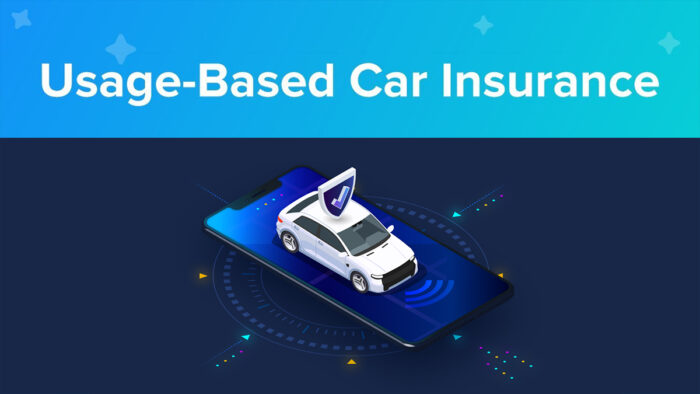In an age where customization is important, the insurance industry has not been left behind. Usage-based insurance, also known as UBI, becomes evident as a groundbreaking innovation. It basically customizes or tailors policies to individual driving behaviors and mileage rather than using general requirements.

This dynamic approach to car insurance, powered by cutting-edge technology and data analytics, promises to revolutionize how premiums are calculated, offering a more personalized and potentially cost-effective solution for dedicated drivers.
What is Usage-Based Insurance?
Usage-based insurance (UBI) is a type of auto insurance where premiums are not just determined by traditional factors like age, location, or insurance score or vehicle type but by how a person drives and how much they drive. It is also known as pay as you drive (PAYD).
What’s more, it is enabled by technological advancements. Usage-based insurance offers a personalized insurance experience, rewarding safe and low-mileage drivers with potentially lower insurance costs.
How Does It Work?
Usage-based insurance uses telematics technology, which involves installing a small device in your vehicle or using a smartphone app to track driving behavior. Hence, this technology can keep track of different data points like miles driven, time of day, speed, hard braking, and rapid acceleration.
Then, insurance companies examine this data to analyze the risk and make changes to the premiums accordingly. This means that the less and safer you drive, the less you get to pay.
What Does Usage-Based Insurance Cover?
Usage-based insurance policies offer coverage similar to traditional auto insurance policies, which can include:
- Liability coverage: This is mandatory in most states and covers damages to others caused by the policyholder at fault in an accident.
- Collision coverage: Pays for damage to the policyholder’s vehicle resulting from a collision, regardless of fault.
- Comprehensive coverage: Covers non-collision-related damage to the policyholder’s vehicle, such as theft, fire, or natural disasters.
- Personal Injury Protection (PIP): Required in some states, it covers medical expenses for the policyholder and passengers after an accident.
- Uninsured or Underinsured Motorist Coverage: Protects the policyholder in case they’re involved in an accident with a driver who has insufficient or no insurance.
With a usage-based insurance policy, you stand to enjoy the above coverages.
What Does It Not Cover?
While usage-based insurance policies offer extensive coverage, there are typical exclusions similar to those in standard auto insurance policies:
- Intentional Damage: Damages intentionally caused by the policyholder.
- Normal Wear and Tear: The natural deterioration of the vehicle over time.
- Commercial Use: Damages occurring while the vehicle is used for business purposes unless specifically covered.
- Personal Belongings: Items stolen from or damaged inside the vehicle, usually covered under homeowners or renters insurance.
These exclusions or scenarios differ from one insurance company to another, so do not expect two companies to offer the same protection and exclusions. These are just the basic events that your usage-based insurance will not cover.
How Much Does Usage-Based Insurance Cost?
The cost of usage-based insurance depends on the individual’s driving habits and the factors assessed by the telematics system. Generally, it includes a base rate plus a variable rate determined by the tracked data.
Factors affecting the cost include:
- Miles Driven: The more you drive, the higher the risk, potentially increasing the cost.
- Driving Behavior: Speeding, hard braking, and rapid acceleration are viewed as risky behaviors.
- Time of Day: Driving at night is often considered riskier than daytime driving.
- Location: Driving in densely populated areas might carry a higher risk of accidents.
Another factor that affects the cost of purchasing a usage-based insurance policy is the insurance provider.
How to Get Usage-Based Insurance
Getting Pay As You Drive insurance involves a few different steps, from researching options to enrolling in a program that fits your driving habits. Here is how you can begin your journey towards potentially lower insurance premiums through usage-based insurance:
- Research insurance providers.
- Compare usage-based programs.
- Understand the terms and conditions.
- Enroll in a usage-based program.
- Install the required technology.
- Keep track of your savings and driving.
- Review and adjust when necessary.
• Research insurance providers
Begin by shopping around for insurance providers that offer usage-based insurance programs. Not all companies have UBI options, and those that do might offer different terms, benefits, and discounts. You can even make use of online resources, reviews, and official insurance company websites to gather information.
• Compare usage-based programs
Once you have a list of potential insurers, compare their programs. Look out for details on:
- Data collected
- Technology used
- Privacy considerations
- Discounts and savings
• Understand the terms and conditions
Before enrolling, thoroughly review the program’s terms and conditions. Understand how your driving data will affect your premiums and what constitutes safe versus risky driving under the program. Also, take note of any obligations, like the minimum duration you need to participate in the program.
• Enroll in a usage-based program
Choose the UBI program that best fits your driving habits and preferences, and follow the insurer’s process for enrollment. This might involve providing additional information about your vehicle and driving habits.
• Install the required technology
If the program requires a plug-in device, install it in your vehicle as directed. This usually plugs into the onboard diagnostics (OBD-II) port, typically located under the dashboard. For app-based programs, download the app and follow the setup instructions, ensuring your smartphone is compatible.
• Keep track of your savings and driving
Many usage-based insurance programs offer feedback on your driving behavior through their app or website. Use this feedback to improve your driving habits further. Keep track of the savings or discounts you’re earning to ensure the program meets your expectations.
• Review and adjust
After you have been in the program for some time, evaluate your experience. Are you saving as much as you expected? Has the program motivated you to change your driving habits? If you are not satisfied, consider exploring other usage-based insurance options or discussing your experience with your insurer to see if adjustments can be made.



